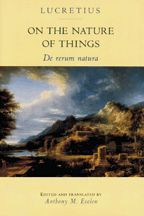
Reviews
Those who always wanted to read the Phaenomena in translation, but never came round to doing it will be pleased with this accessible, nimble translation in flowing English couplets, which conveys the pleasure of Aratus well. Both the introduction and the notes are up-to-date, clear, and useful.
Poochigian here gives us an Aratus for our own time, turned in witty heroic couplets which fittingly recall Pope's didactic poems, decently faithful to the original, and helpfully introduced and annotated... This lively and polished version illuminates why this potentially austere cataloguepoem was so enthusiastically read for so many centuries, and it is to be warmly welcomed.
Poochigan won't be beat for readability.
The translation is full of linguistic verve and lively intelligence—thoroughly attractive and rewarding to read. The concise and helpful commentary is a further boon.
Book Details
Introduction
Invocation
The Axle, the Poles, and the Northern Sky
The Southern Sky
The Planets and the Great Circles
Weather Signs
Appendix 1: Constellation Risings and Settings
Appendix 2: Bayer
Introduction
Invocation
The Axle, the Poles, and the Northern Sky
The Southern Sky
The Planets and the Great Circles
Weather Signs
Appendix 1: Constellation Risings and Settings
Appendix 2: Bayer Designations
Notes
Works Cited






